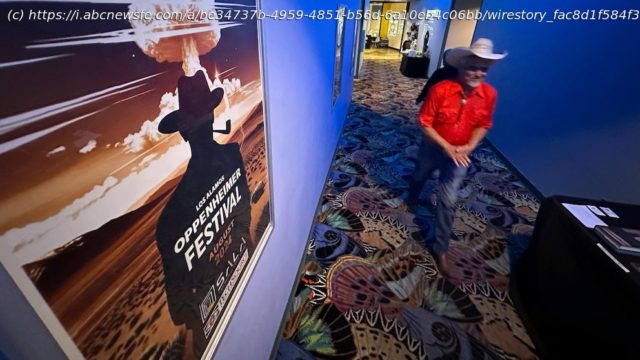Not many people know the world’s first detonation of an atomic bomb was on U.S. soil
— It was the summer of 1945 when the United States dropped atomic bombs on Japan, killing thousands of people as waves of destructive energy obliterated two cites. It was a decisive move that helped bring about the end of World War II, but survivors and the generations that followed were left to grapple with sickness from radiation exposure.
At the time, U.S. President Harry Truman called it “the greatest scientific gamble in history», saying the rain of ruin from the air would usher in a new concept of force and power. What he didn’t mention was that the federal government had already tested this new force on U.S. soil.
Just weeks earlier in southern New Mexico, the early morning sky erupted with an incredible flash of light. Windows rattled hundreds of miles away and a trail of fallout stretched to the East Coast.
Ash from the Trinity Test rained down for days. Children played in it, thinking it was snow. It covered fresh laundry that was hanging out to dry. It contaminated crops, singed livestock and found its way into cisterns used for drinking water.
The story of New Mexico’s downwinders — the survivors of the world’s first atomic blast and those who helped mine the uranium needed for the nation’s arsenal — is little known. But that’s changing as the documentary “First We Bombed New Mexico” racks up awards from film festivals across the United States.
It’s now screening in the northern New Mexico community of Los Alamos as part of the Oppenheimer Film Festival. It marks a rare chance for the once secret city that has long celebrated the scientific discoveries of J. Robert Oppenheimer — the father of the atomic bomb — to contemplate another more painful piece of the nation’s nuclear legacy.
The film, directed and produced by Lois Lipman, highlights the displacement of Hispanic ranching families when the Manhattan Project took over the Pajarito Plateau in the early 1940s, the lives forever altered in the Tularosa Basin where the bomb was detonated and the Native American miners who were never warned about the health risks of working in the uranium industry.
Their heart-wrenching stories woven together with the testimony of professors and doctors spurred tears in Los Alamos, as they have in Austin, Texas, Annapolis, Maryland, and every other city where the film has been screened.
Andi Kron, a long-time Los Alamos resident, was in awe of the cinematography but also horrified as she learned more.
Домой
United States
USA — IT 'We were expendable': Downwinders from world's 1st atomic test are on a...






